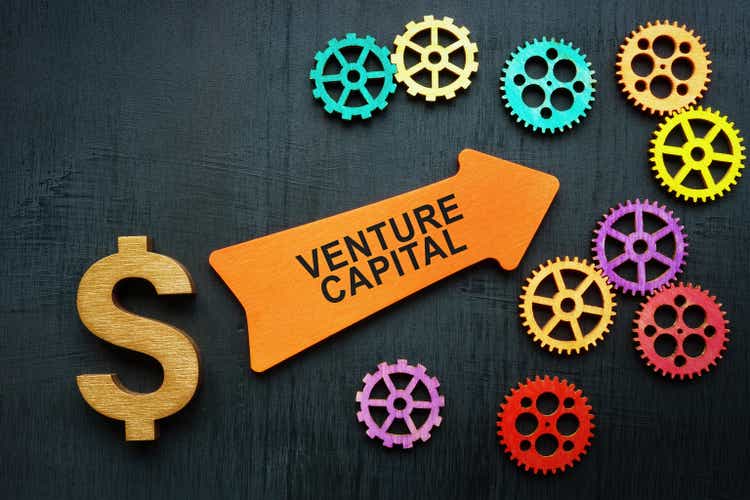
designer491
The bubble in artificial intelligence is bound to burst, and it’ll probably do so next year, according to one venture capitalist.
That doesn’t mean the technology isn’t real, however.
“AI is the next revolution in tech, but it’s also been around forever,” Yanev Suissa, the founder of venture capital firm SineWave Ventures, said in an interview with Seeking Alpha this week, while pointing to facial recognition technology as an example. The firm has $300M in assets under management. “It’s one of those things that’s going to pop and it’ll be a huge pop. And then it’ll sort itself out, right?”
Suissa suspects that a generative AI chatbot will spit out something inappropriate related to race or the upcoming U.S. presidential election, prompting an upheaval in a rapidly developing industry. He also said it’s likely AI will end up like blockchain — not a thing in and of itself, but a tool to be incorporated into enterprises to increase efficiency.
Generative AI is the tech buzzword of the year and has investors chasing down any and all opportunities they can spot. Goldman Sachs estimated that investment in generative AI could reach $200B by 2025. In August, McKinsey found that less than a year after many of the tools debuted, one-third of survey respondents said their organizations are using generative AI regularly and 40% of respondents said their organizations will increase their investment in AI overall because of advances in generative AI.
There is one area of AI that Suissa is eyeing as an investor, the security surrounding proprietary data.
“Security is a key part of any solution. You cannot provide anything today in the tech world without security as part of it,” Suissa said. “You need to be able to integrate for proprietary data without it thinking it, knowing it’s secure and also being able to tailor it to your own business.”
Databricks
SineWave has funded now-public companies like Evolv Technologies Holdings (EVLV) and SentinelOne (S), as well as Databricks, a data analytics company that is expected to go public in the mid-term.
Suissa compared Databricks to Snowflake (NYSE:SNOW), pointing out that a primary difference is that the former works with real-time unstructured or streaming data, as well as structured data. Snowflake (SNOW) only works with structured data and partners with other companies for streaming data. Snowflake (SNOW) is up about 19% in 2023.
The next stage for data analytics is the incorporation of AI, Suissa said. Databricks tackled that earlier this year with its $1.3B purchase of MosaicML, a young AI company that lets startups use their data with large language models and generative AI.
“They’re going to own this space,” Suissa said. The company is on track to hit $2B in revenue in the coming quarters, the executive said.
Databricks declined to comment for this story.
Snowflake (SNOW) also jumped into the AI space as well with its purchase of Neeva, a generative AI search engine, in May.
The two are similar but Databricks is geared toward data lake and Snowflake (SNOW) toward data warehousing.
A data lake holds data of all structure types, including raw and unprocessed data, while a data warehouse stores data that has been treated and transformed with a specific purpose in mind, according to Microsoft (MSFT).
Snowflake is best suited for structured query language-like business intelligence applications and provides better performance. Databricks, which has a steeper learning curve, offers support for multiple programming languages. Many companies are having to use them together, according to cloud platform Macrometa.
Snowflake declined to comment.
With AI everywhere, Suissa sees the future mainly as use cases within existing processes and systems. He also likened AI to blockchain in terms of hype and future uses, though he did note a big and highly-relevant difference between the two mega-hyped business trends.
In AI, “you have a lot of sophisticated adults working, not just 21-year-old developers, working with people in industry,” Suissa said. “You know, yeah, all these 21-year-old blockchain developers who are creating solutions for industrial companies never having worked a day in their life, right?”
And while it’s not fully clear what exactly AI solutions will look like, it has legs, he added.








